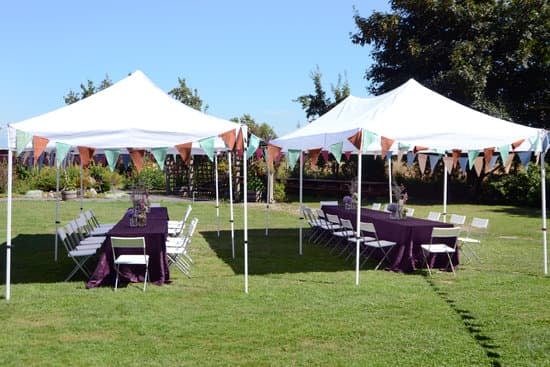Adding layers of tulle to a wedding dress can bring an ethereal and romantic touch to your bridal look. From enhancing the volume and shape of the gown to adding a dreamy texture, tulle is a versatile fabric that can truly transform the overall appearance of your dress. In this guide on how to add layers of tulle to a wedding dress, we will walk you through the steps and essential materials needed to achieve this beautiful design element.
To start this creative process, you will need a few key materials such as tulle fabric in your desired color, scissors, pins, needle and thread. The right tulle fabric is crucial for achieving the desired effect – whether you prefer a soft and flowing look or a more structured silhouette. Choosing the appropriate type of tulle that complements your wedding dress style is essential for creating a cohesive and harmonious overall design.
Once you have gathered all the necessary materials, it’s time to prepare your wedding dress for the addition of tulle layers. This involves carefully assessing where you want to place the layers, ensuring that they enhance rather than overpower the existing design. By following these steps and paying attention to detail, you can confidently embark on this creative journey of adding layers of tulle to your wedding dress.
Choosing the Right Tulle Fabric for Your Dress
Choosing the right tulle fabric for your wedding dress is essential to achieve the desired look and style. Tulle comes in various types, each with its own unique characteristics and textures. When selecting tulle for your dress, consider factors such as the weight of the fabric, the stiffness or softness of the material, and the color.
For a romantic and ethereal look, opt for soft and lightweight tulle that drapes beautifully. If you want to add structure and volume to your dress, choose a stiffer tulle that will hold its shape effectively. Additionally, consider the color of the tulle – whether you want it to match your dress exactly or provide a subtle contrast for added depth.
When adding layers of tulle to your wedding dress, it’s important to choose a high-quality fabric that complements the overall design. Look for tulle that is easy to work with and sew, ensuring a smooth process when attaching the layers to your dress. Remember that the type of tulle you select will greatly influence how the final result appears on your gown.
| Tulle Fabric Type | Characteristics |
|---|---|
| Soft Tulle | Lightweight, drapes beautifully |
| Stiff Tulle | Provides structure and volume |
| Colorful Tulle | Adds depth or contrast to the dress |
Preparing the Wedding Dress for the Tulle Layers
Next, carefully examine the silhouette of the dress and determine where you want to add the tulle layers. Whether you want a full skirt with multiple layers of tulle or subtle detailing around the hem, planning out the placement of the tulle will help guide you during the layering process. This step will also help you estimate how much tulle fabric you will need for your design.
Once you have established the placement of the tulle layers, it is important to make sure that the base dress is properly fitted and structured to support the additional fabric. Make any necessary alterations or adjustments to ensure that the dress provides a good foundation for adding layers of tulle. By preparing your wedding dress thoughtfully before adding tulle layers, you can create a stunning and cohesive look that enhances your overall bridal ensemble.
| Step | Description |
|---|---|
| Clean and Prepare Dress | Ensure that the wedding dress is clean, free of wrinkles, and any embellishments are securely attached. |
| Plan Tulle Placement | Determine where you want to add tulle layers on your dress and map out your design. |
| Check Dress Structure | Make sure that the base dress is well-fitted and structured to support additional fabric. |
Measuring and Cutting the Tulle Fabric for the Layers
When it comes to adding layers of tulle to a wedding dress, one of the essential steps is measuring and cutting the tulle fabric correctly. This process is crucial in ensuring that the tulle layers are symmetrical, evenly distributed, and complement the overall design of the dress. In this section, we will guide you on how to measure and cut the tulle fabric for the layers effectively.
Measuring for Precision
Before cutting the tulle fabric for your wedding dress, it is important to take precise measurements to ensure a perfect fit. Start by measuring the length and width of each layer you intend to add. Remember to account for any additional fullness or gathering you desire in your tulle layers. Use a sharp pair of fabric scissors to cut along marked lines, ensuring clean and straight edges.
Cutting With Care
When cutting the tulle fabric for your wedding dress, make sure to work on a flat surface to prevent any uneven cuts or tears in the material. If you are creating multiple layers of tulle, consider using a rotary cutter and self-healing mat for more accurate results. Take your time with each cut, as tulle can be delicate and prone to fraying. Double-check your measurements before proceeding to guarantee consistency throughout all layers.
Additional Tips
To achieve a seamless look when adding layers of tulle to a wedding dress, experiment with different cutting techniques such as tapering or graduated lengths for a cascading effect. Keep all scraps of tulle aside for potential touch-ups or embellishments later on.
Remember that practice makes perfect, so don’t be discouraged if you encounter challenges while cutting your tulle fabric – patience and attention to detail will ultimately lead to stunning results in enhancing your bridal gown with beautiful tulle layers.
Attaching the Layers of Tulle to the Wedding Dress
Adding layers of tulle to a wedding dress can completely transform its look, adding volume, texture, and ethereal beauty. When it comes to attaching the tulle layers to the dress, there are a few key steps to follow to ensure a seamless and stunning result.
To successfully attach the layers of tulle to your wedding dress, you will need the following materials:
- Scissors
- Sewing pins
- Needle and thread that matches the color of your tulle fabric
- Flatiron or steamer (for preparing the tulle)
One important aspect of attaching the tulle layers is ensuring that they are sewn on securely but also in a way that allows for movement and flexibility. Here’s how you can go about attaching the layers of tulle to your wedding dress:
- Lay out your wedding dress on a flat surface and determine where you want to add the tulle layers.
- Pin the first layer of tulle onto the dress, making sure it is positioned evenly and securely.
- Using small and discreet hand stitches, sew the pinned edge of the tulle onto the wedding dress. Be careful not to sew through both sides of the dress.
By following these steps and taking your time with each layer of tulle, you can achieve a beautiful and cohesive look for your wedding dress. Experiment with different placement options for the tulle layers to create unique shapes and volumes that complement your gown perfectly.
Creating Volume and Shape With the Tulle Layers
Adding layers of tulle to a wedding dress is an excellent way to create volume, shape, and a touch of romance to your bridal look. Tulle is a lightweight and airy fabric that can add fullness without weighing down the gown. In this section, we will guide you through the process of creating volume and shape with the tulle layers to achieve the perfect silhouette for your dream dress.
Creating Layers for Volume
To add volume to your wedding dress using tulle, you can layer multiple pieces of tulle fabric. The number of layers will depend on how full you want the skirt to be. By strategically placing the tulle layers underneath the outer fabric of the dress, you can achieve a voluminous look while still maintaining a light and airy feel. Experiment with different lengths and widths of tulle layers to find the perfect balance between volume and movement.
Enhancing Shape With Tulle
Tulle can also be used to enhance or create specific shapes in your wedding dress. For example, if you want a ball gown silhouette, you can use multiple layers of gathered tulle at the waistline to create a dramatic flare.
Alternatively, if you prefer a mermaid silhouette, adding tulle layers that gradually flare out from the knees can help accentuate your curves. Play around with different placement and techniques such as ruching or pleating to sculpt the desired shape with tulle.
Securing Layers for Structural Support
Once you have added the desired number of tulle layers and achieved the volume and shape you desire, it is essential to secure them properly to ensure they stay in place throughout your wedding day. Consider stitching each layer individually to prevent shifting or bunching.
Additionally, adding a waistband or belt over the top layer of tulle can help hold everything in place while adding an elegant touch to your ensemble. Remember that proper securing of the tulle layers will not only maintain their structure but also contribute to the overall comfort and ease of movement in your dress.
Finishing Touches
Adding layers of tulle to a wedding dress can completely transform the look and feel of the gown, giving it that dreamy and ethereal vibe that many brides desire for their special day. Once you have successfully attached the layers of tulle to your dress, it is crucial to focus on securing and finishing them properly to ensure that they stay in place and look flawless throughout the celebration.
Here are some important steps to consider when adding the finishing touches to your tulle layers:
- Use invisible thread or clear fishing line: When securing the layers of tulle to your wedding dress, opt for invisible thread or clear fishing line to maintain a seamless finish. This will help keep the tulle securely in place without drawing attention away from the overall design of the gown.
- Add delicate embellishments: To enhance the beauty of the tulle layers, consider adding subtle embellishments such as beads, sequins, or lace appliques. These embellishments can add a touch of glamour and sophistication to your wedding dress while complementing the whimsical quality of the tulle.
- Finish with a clean hemline: To give your tulle layers a polished look, make sure to finish them with a clean hemline. You can use fabric glue or hand-sew a narrow rolled hem along the edges of the tulle fabric to prevent fraying and create a neat and tidy appearance.
By paying attention to these finishing touches, you can elevate the overall aesthetic of your wedding dress and create a stunning silhouette that is sure to captivate everyone on your big day.
Now that you have successfully secured and finished the layers of tulle on your wedding dress, take a moment to admire your handiwork before stepping into this transformative gown on your special day. With proper care and attention to detail, you can achieve a breathtaking look that highlights the enchanting beauty of tulle while making you feel like a true bridal vision.
Remember, adding layers of tulle is not just about creating volume and shape – it’s also about infusing your dress with personality and charm that reflects your unique style as a bride.
Tips and Tricks for Adding Layers of Tulle to a Wedding Dress
Adding layers of tulle to a wedding dress can truly transform the overall look of the gown, adding volume, texture, and a touch of whimsy. To ensure that the process goes smoothly and the end result is nothing short of stunning, here are some tips and tricks to keep in mind:
Firstly, make sure you have all the necessary materials on hand before you begin adding layers of tulle to your wedding dress. This includes the tulle fabric in your desired color and length, scissors for cutting the fabric, pins for securing the layers in place, a needle and thread for sewing, and any additional embellishments you may want to add.
When selecting the tulle fabric for your dress, consider factors such as the color, stiffness, and weight of the fabric. Soft and lightweight tulle will create a romantic and ethereal look, while stiffer tulle will provide more structure and volume. Experiment with different types of tulle to see which works best for the style of your wedding dress.
To achieve a seamless look when attaching the layers of tulle to your wedding dress, take your time measuring and cutting the fabric accurately. It’s important to ensure that each layer is cut to the correct length and width before sewing or attaching them to the dress. This precision will result in a polished and professional finish that enhances the overall design of your gown.
Final Thoughts
Transforming a wedding dress with layers of tulle can truly elevate the overall look and feel of the gown. By following the steps outlined in this guide on how to add layers of tulle to a wedding dress, you can achieve a stunning and ethereal effect that will make any bride feel like a princess on her special day.
One of the key aspects to keep in mind when adding tulle layers is to ensure that you choose the right fabric for your dress. The type of tulle you select can greatly impact the final outcome, so take the time to consider your options and pick a fabric that complements your gown beautifully.
Another important factor to consider is creating volume and shape with the tulle layers. By strategically placing and sewing the layers onto the dress, you can achieve a full and dramatic silhouette that will surely turn heads as you walk down the aisle. Remember, attention to detail is key when adding tulle layers, so take your time during the process to ensure a flawless result.
Frequently Asked Questions
Can You Add a Layer of Tulle to a Wedding Dress?
Yes, you can add a layer of tulle to a wedding dress. This can be done by a skilled seamstress who knows how to work with delicate fabrics like tulle. Adding tulle can enhance the overall look and feel of the dress, giving it more volume or texture.
Can Seamstress Add Tulle to Wedding Dress?
A seamstress can definitely add tulle to a wedding dress. It requires careful attention to detail and precision to seamlessly incorporate the new layer of tulle into the existing design of the dress. The seamstress should have experience working with tulle to ensure a professional result.
Can You Add More Tulle to a Dress?
Adding more tulle to a dress is possible, depending on the style and structure of the garment. It may involve removing certain layers or altering the existing design to accommodate additional tulle layers. A skilled seamstress can assess the dress and make recommendations on how best to add more tulle while maintaining the integrity of the original design.

I have been involved in marriages for over 20 years helping couples and singles understand more about them.





